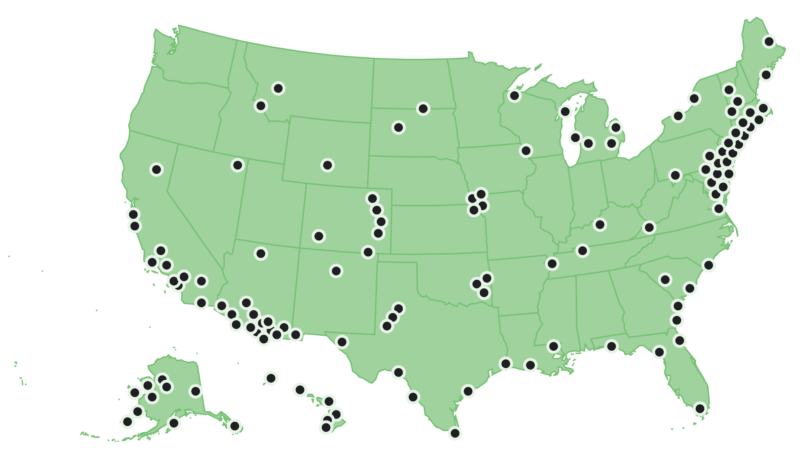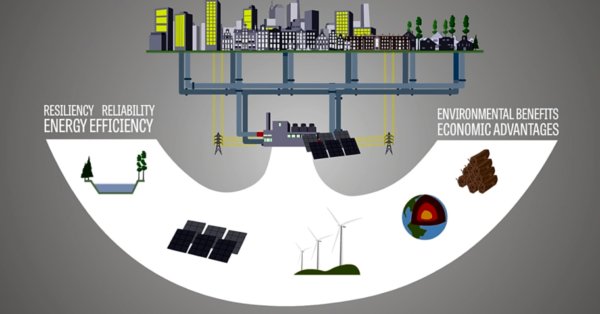Microgrids are a growing segment of the energy industry, representing a paradigm shift from remote central station power plants toward more localized, distributed generation - especially in cities, communities and campuses.

The power to isolate from the larger grid makes microgrids resilient, and the ability to conduct flexible, parallel operations permits delivery of services that make the grid more competitive.
461 operational microgrids
3.1 gigawatts of reliable electricity


Microgrids can create efficiencies in many ways. For instance, using cogeneration to serve balanced electric and thermal loads, microgrids can achieve generation efficiencies above 80 percent compared to around 30 to 50 percent for conventional generation. In addition, including renewable energy allows microgrids to undertake efficient and flexible hybrid generation operations. By using thermal and electrical storage to manage time of use of imported electricity and fuel, microgrids help moderate power prices by efficiently shifting load to times of lower demand and pricing. Building temperatures generally move slowly, and by “smart” management of thermal loads, microgrids can effectively use buildings themselves as thermal storage to manage load shape. These and similar efficiency and energy management strategies not only save money but also significantly reduce the environmental impact of providing energy services.
California’s Alameda County twenty-two-year-old 45 ha 4,000-inmate Santa Rita Jail, about 70 km east of San Francisco, has a large microgrid. Often described as a green prison, it has a considerable installed base of distributed energy resources (DER) including an eight-year old 1.2 MW PV array, a five-year old 1 MW fuel cell with heat recovery, and considerable efficiency investments.
A 2012 US$14 M expansion added a 2 MW-4 MWh Li-ion battery, a static disconnect switch, and various controls upgrades. During grid blackouts, or when conditions favor it, the Jail can now disconnect from the grid and operate as an island, using the on-site resources described together with its back-up diesel generators.
The mission of the Borrego Springs Microgrid project was to build a primarily renewable energy based microgrid that could independently provide power to an entire substation and the approximately 2,500 residential and 300 commercial and industrial customers it serves in the community. Borrego Springs has a history of numerous outages because of severe environmental conditions and is located at the end of a single transmission line.
The microgrid project provides a direct and significant benefit to a real-world community and has a positive effect on the environment because it increases the community’s energy resilience while reducing its carbon footprint by using renewable energy resources.
The microgrid at Philadelphia’s Navy Yard features a 8 megawatt (8 MW) natural gas-fired peaking plant that anchors one of the largest private microgrids in the United States. This on-site generation facility will help support the energy demand for the 1,200-acre campus as businesses continue to locate here and grow, while remaining in line with the Navy Yard’s commitment to smart energy initiatives and sustainability.
The peaking plant is expected to run during the Navy Yard’s peak demand periods and during intervals of high-cost energy and capacity from the grid. The plant will be capable of providing certain resiliency services and critical support in the event of extended grid outages in addition to shaving the peak load requirements of the microgrid.
The Fort Collins Microgrid in Colorado is part of a larger project known as the Fort Collins Zero Energy District (FortZED), where the district plans to create as much thermal and electrical energy locally as it uses. The microgrid project involves multiple customers including the New Belgium Brewery, InteGrid laboratory, City of Fort Collins facilities, Larimer County facilities, and Colorado State University main campus facilities as well as a variety of distributed energy generation technologies.
Technologies in the project include solar PV, CHP, microturbines, fuel cells, plug-in hybrid electric vehicles, thermal storage, load shedding, and demand side management.
Fort Carson in Colorado Springs is one of several microgrid projects underway on U.S. bases under the SPIDERS (Smart Power Infrastructure Demonstration for Energy Reliability and Security) program. The base as a whole has an ambitious plan to become a net zero facility using huge PV resources, potentially over 100 MW, as well as wind, ground-source heat pumps, biomass, and solar water heating.
The microgrid project is intended to keep a group of central base facilities operating without grid power as an island, in the event of grid failure.